The major business media outlets buzzed about the Complaint filed in federal court in California on February 12, 2024, by Kelly Toys Holdings, LLC “(Kelly Toys”) against Build-A-Bear Workshop, Inc. (referred to as “Build-A-Bear”). Kelly Toys alleges that Build-A-Bear infringes the Squishmallows trade dress by selling the Skoosherz plush toys. Kelly Toys also alleges copyright infringement and unfair competition.
Three other entities affiliated with Kelly Toys joined as Plaintiffs in the California lawsuit – Jazwares, LLC; Kelly Amusement Holding, LLC; and Jazplus, LLC. Kelly Toys has given the three other Plaintiffs the right to sell and distribute Squishmallows. As a result, all Plaintiffs have an interest in the infringement claims against Build-A-Bear.
The parties certainly have the resources to litigate. Kelly Toys is owned (indirectly) by Waren Buffet’s Berkshire Hathaway, and Build-A-Bear is a 400-million-dollar company with 500 brick-and-mortar locations around the world.
FACTUAL CLAIMS OF THE PARTIES
Kelly Toys
The “Squishmallows” line of plush toys was released in 2016. They are soft and huggable and often referred to simply as “Squish.” Squishmallows immediately appealed to customers. Lady Gaga and Kim Kardashian posted their collections of Squishmallows on social media. In 2021, The New York Times published an article entitled Squishmallows Are Taking Over.
Kelly Toys also alleges that it owns several copyright registrations in and related to Squishmallows products. Squishmallows are sold in Target, Walgreens, Walmart, and other retail stores. Today there are over 3,000 different Squishmallows plush toy characters.
Build-A-Bear began selling “Skoosherzs” in January 2024. Kelly Toys states that Build-A-Bear decided it would be easier to simply copy and imitate Squishmallows rather than compete fairly. Beyond that, Kelly Toys claims Build-A-Bear hopes to confuse customers into buying Skoosherzs instead of Squishmallows.
What’s the trade dress here? In its Complaint, Kelly Toys claims Skoosherzs have at least five of the distinctive features in the Squishmallows distinctive trade dress: (1) fanciful renditions of animals/characters; (2) Asian style Kawaii faces; (3) embroidered facial features; (4) distinctive non-monochrome coloring; and (5) velvety velour-like textured exterior. Kelly Toys claims ownership and a protectible interests in the “Squishmallows Trade Dress.”
Kelly Toys presented this comparison in support of its factual claim that Build-A-Bear’s Skoosherzs have the same trade dress as Kelly Toys’
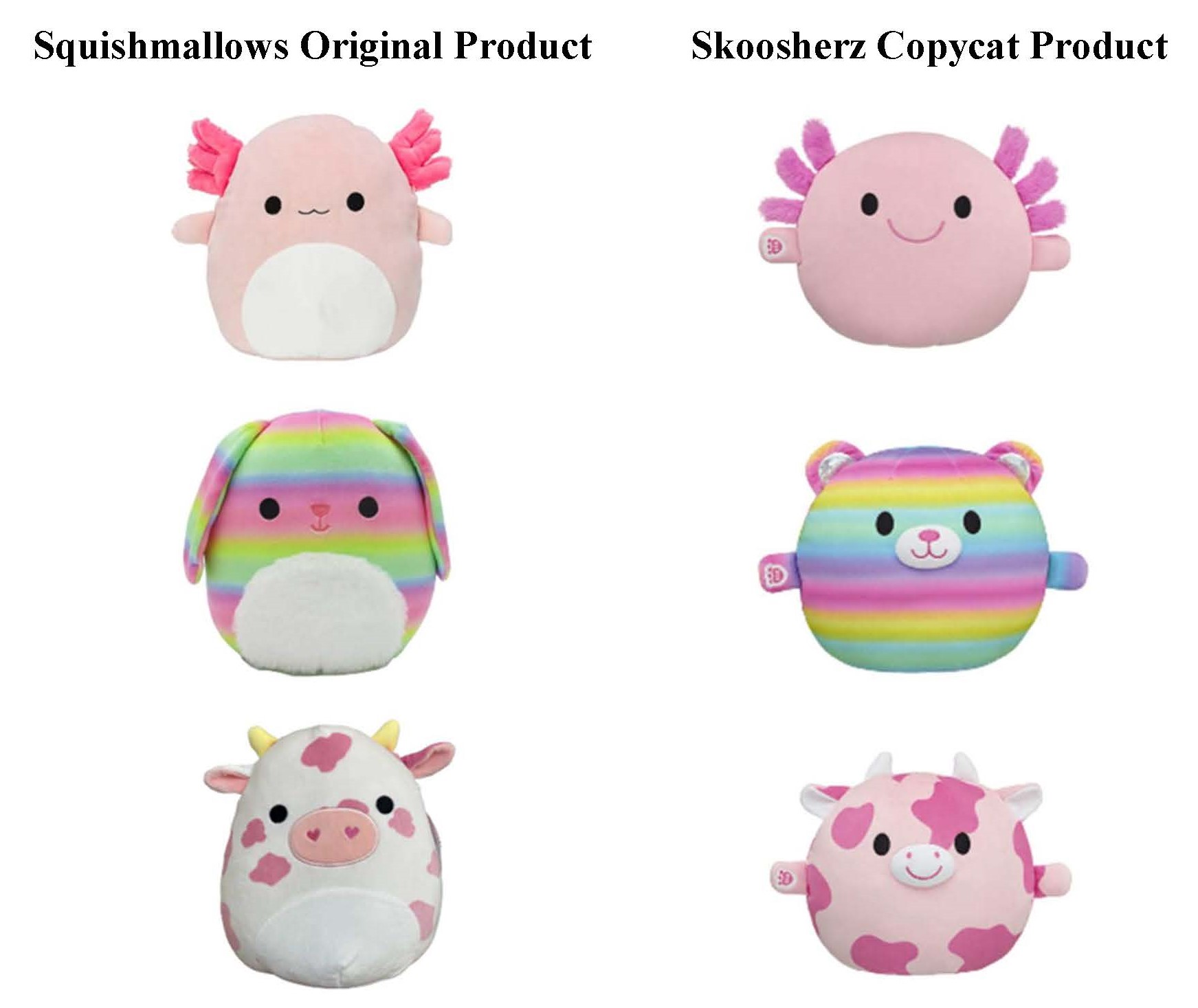
Kelly Toys asks the Court to enjoin Build-A-Bear from manufacturing or selling the Skoosherzs or otherwise infringe on Kelly Toys’ trade dress.
As to the copyright cause of action, Kelly Toys alleges it has copyright visual arts (image) registrations on two Squishmallows, plus dozens of photographs of Squishmallows on its website which are entitled to copyright protection. Kelly Toys claims to own the exclusive rights in and to the “Squishmallows Work” and that Build-A-Bear has infringed Kelly Toys’ copyright by knowingly and intentionally reproducing, copying, and displaying the Skoosherz plush toy.
Build-A-Bear
For starters, Build-A-Bear argues that Kelly Toys and its Co-Plaintiffs are litigious and have sought to prevent numerous manufacturers and sellers from selling plush toys. Many plush toy were created, manufactured, and sold long before 2016 when Squishmallows were released, casting doubt on Squishmallows’ originality.
The contest between Squishmallows and Skoosherzs began before Kelly Toys’ February 12 Complaint. An affiliate of Kelly Toys named Jazwares, LLC, sued Build-A-Bear in a Florida state court on January 29, 2024, for trade dress infringement. Things did not go well for Jazwares. An ex parte emergency motion for a preliminary injunction filed by Jazwares was denied the same day it was filed.
The legal situation between Kelly Toys and Build-A-Bear then became a rush to the courthouse. Kelly Toys filed its Complaint in federal court in California the same day Build-A-Bear filed a Complaint for Declaratory Judgment in federal court in Missouri. Build-A-Bear in its Complaint informs the Court of the Florida court’s recent denial of Kelly Toys’ motion for an injunction.
Build-A-Bear also points out that one or more of the Plaintiffs have previously or are currently asserting Squishmallows trade dress and copyright claims against multiple manufacturers and sellers of plush toys, including Ty, Inc.; Dan-Dee International; and Zuru, LLC. Furthermore, Build-A-Bear alleges that Plaintiffs have filed at least thirty-three (33) federal district lawsuits against hundreds of defendants alleging infringement.
Build-A-Bear claims that Skoosherzs were not copied from Squishmallows. Skoosherzs have a distinctively round or spherical shape whereas Squishmallows usually have an “egg/bell” shape, but others have round or oval shapes. All Skoosherzs have arms whereas most Squishmallows do not. The Squishmallows’ snouts, coloring, faces, eyes, and bellies vary and are not consistent.
Build-A-Bear states that there can be no customer confusion because every Skoosherz has arms, one of which has the Build-A-Bear registered paw-print/three-letter design trademark. (This is visible in the comparison images above.) Skoosherzs can only be purchased in a Build-A-Bear retail store or online through Build-A-Bear’s website. Each Skoosherz sold has an attached paper hang tag with the Build-A-Bear Workshop registered word trademark. The initial versions of the Skoosherz are based on the designs of original Build-A-Bear plush animals, not on Squishmallows:
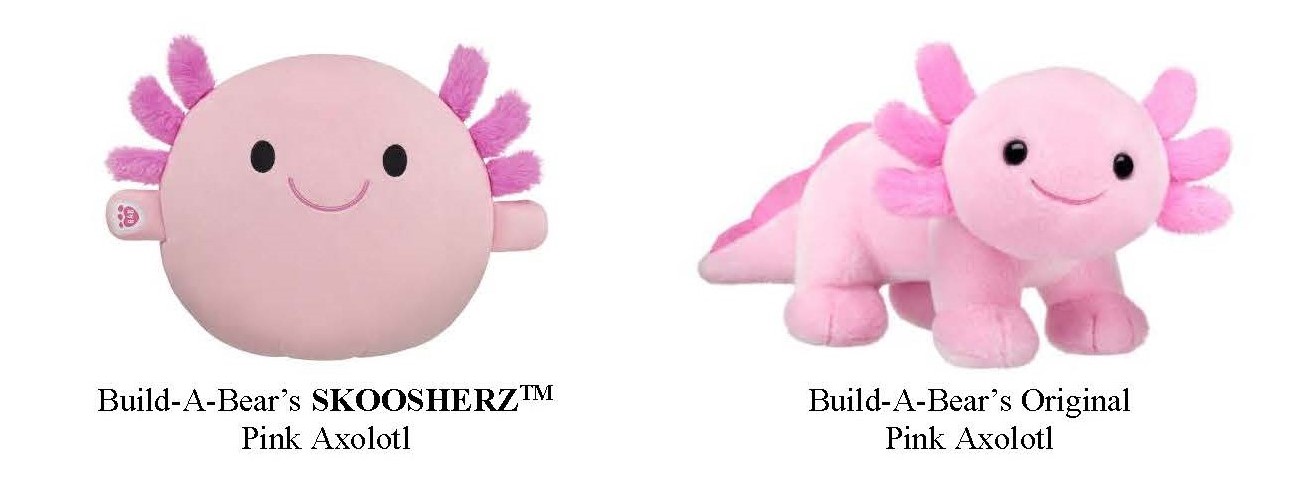 Numerous images of other, pre-2016 plush toys are contained in Build-A-Bear’s Complaint to show that the Squishmallows designs were and are not unique or original.
Numerous images of other, pre-2016 plush toys are contained in Build-A-Bear’s Complaint to show that the Squishmallows designs were and are not unique or original.
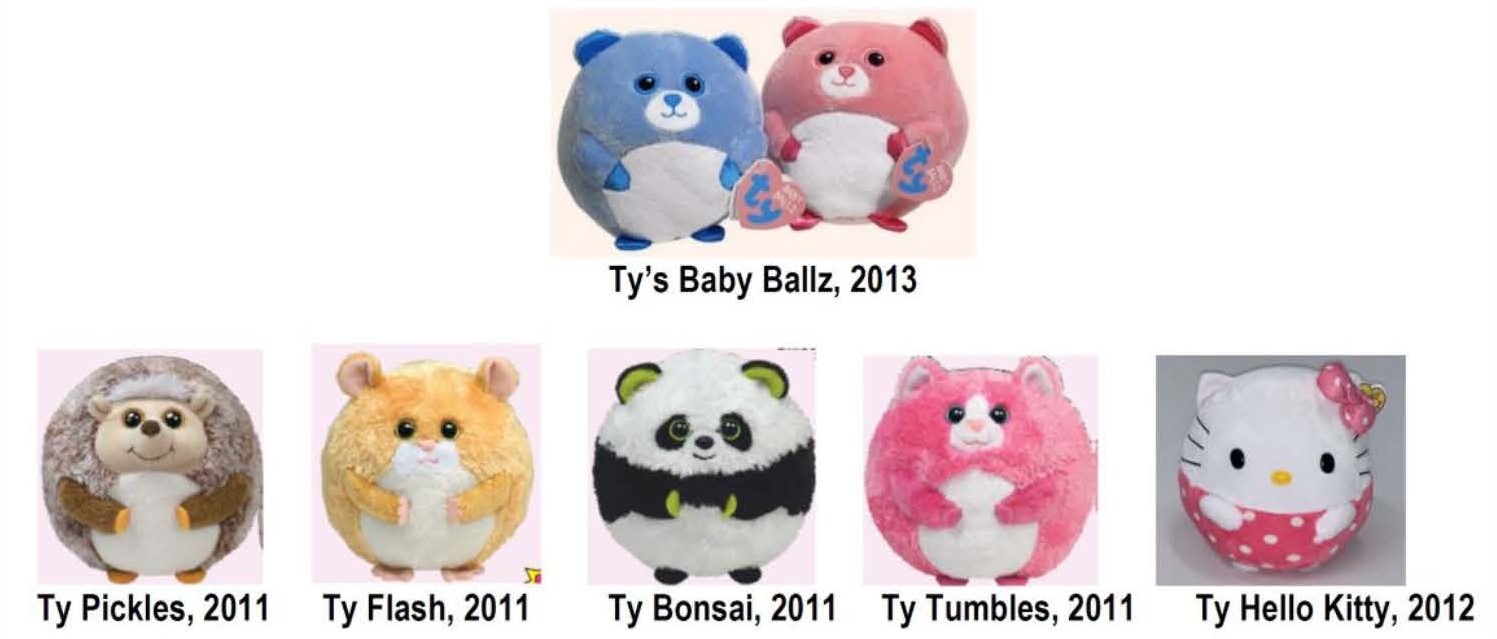
Most of the litigation activity has gravitated to the federal court in California. On March 5, 2024, Build-A-Bear filed a Motion to Dismiss, and the Motion may be heard as early as May 10.
TRADE DRESS AND COPYRIGHT LAW
Trademark protection and trade dress protection exist in the Lanham Act and in common law. Trade dress is the total image and overall appearance of a product or the totality of the elements of the product. It may include features such as size, shape, color or color combinations, texture and graphics. Two Pesos, Inc. The Taco Cabana, Inc. 505 U. S. 763, 764 n.1 (1992). If the product features are functional, then they cannot be trade dress and the Trademark Office will not register the totality of the elements as protectable trade dress.
To state a claim for trade dress infringement, Kelly Toys must prove (1) a trade dress that is nonfunctional, (2) either inherently distinctive or has acquired a secondary meaning, and (3) defendant’s competing product is likely to be confused with Kelly Toys’ products by members of the consuming public. See Int’l Jensen, Inc. V. Metrosound U.S A., Inc., 4 F.3d 819, 823 (9th Cir. 1993). Build-A-Bear has only suggested that some of the features in the Squishmallows trade dress claimed by Kelly Toys are functional. The stronger challenges by Build-A-Bear are that the claimed trade dress is not inherently distinctive, has not acquired a secondary meaning, and is not likely to be confused with a Skoosherz. Confusion is unlikely because of Skooshers consistently round shape, arms with the Build-A-Bear logo, and the limitations on where a Skoosherz can be purchased.
Another trade dress infringement requirement has been developed in the case law. A plaintiff alleging trade dress infringement must adequately define the trade dress for which it claims protection. In other words, there must be a clear, adequate, and consistent description of the features constituting a protectable trade dress.
Build-A-Bear has hammered on this point in both its Complaint filed in Missouri federal court and in its Motion to Dismiss filed in California federal court. The rationale behind this requirement is that without a clear and consistent description of the claimed trade dress, other parties in the market could not have notice and understanding of the claimed trade dress. See 1 McCarthy on Trademarks and Unfair Competition, § 8.3 (5th ed. 2024).
With respect to Kelly Toys’ copyright cause of action, Build-A-Bear argues that there is no showing that the two registered images shown in Kelly Toys’ Complaint are the same images that were deposited with the Copyright Office at the time of registration. In addition, although not set forth in Build-A-Bear’s court filings, copyright requires that the work be original. The existence of so many plush toys prior to 2016 may undercut Kelly Toys copyright claim.
Kelly Toys’ unfair competition causes of action are likely to follow the decisions on trade dress infringement.
OUTLOOK
Kelly Toys’ case has a lot to overcome. The many plush toys in the market over many years is a significant hurdle. Another is the difficulty of stating a clear, accurate, and consistent description of the Squishmallows trade dress. Yet another is Build-A-Bear’s product labeling and purchasing source restrictions that tend to lessen the likelihood of confusion as to the source of the plush toy.
That said, Build-A-Bear did vigorously jump into the market and was late to the party, to boot. Build-A-Bear has tapped into a market built by Kelly Toys.
To get a first-hand experience, this blog author went to Walmart and then to a Build-A-Bear retail store looking for Squishmallows and Skoosherzs. Here are the pictures from that outing:
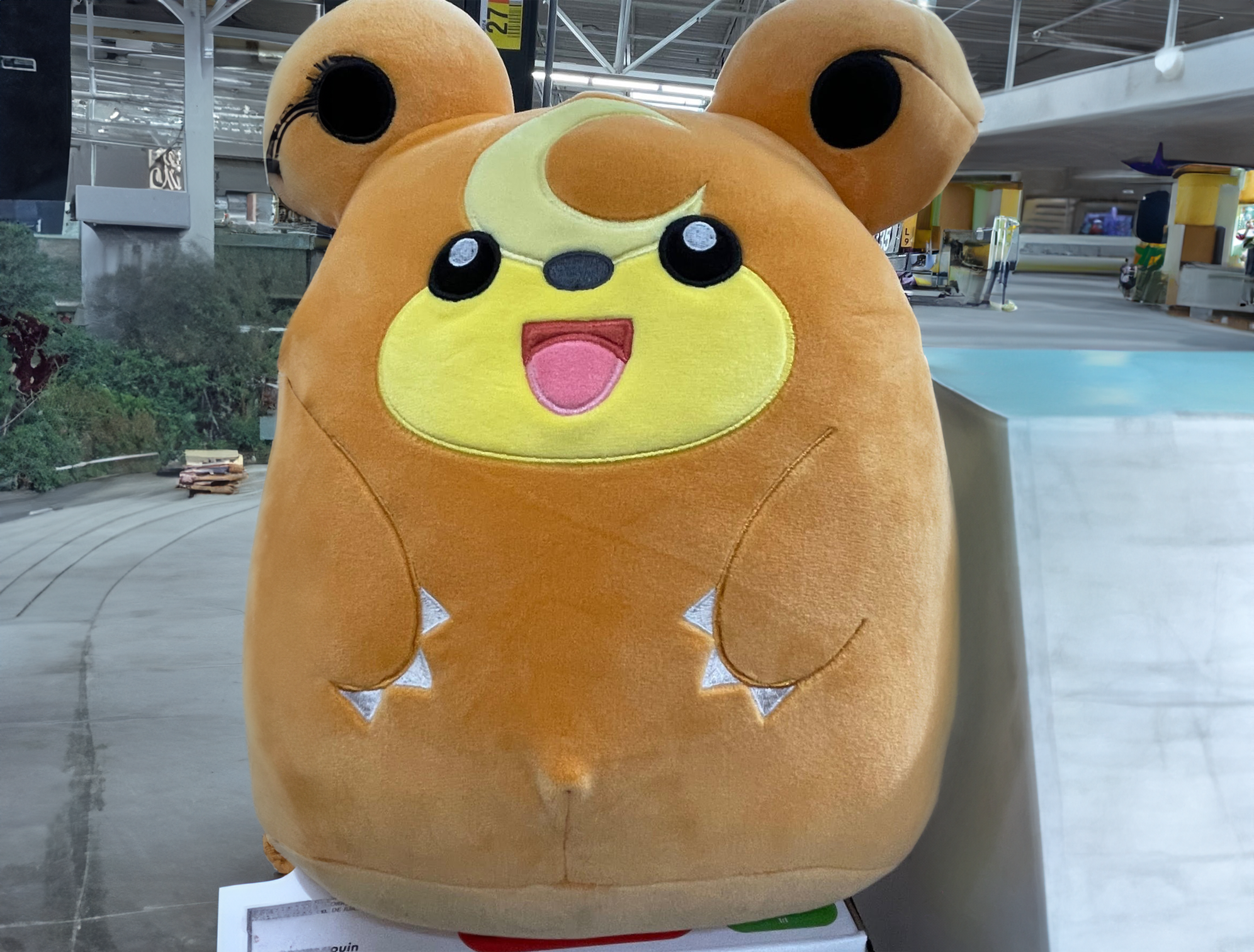 |
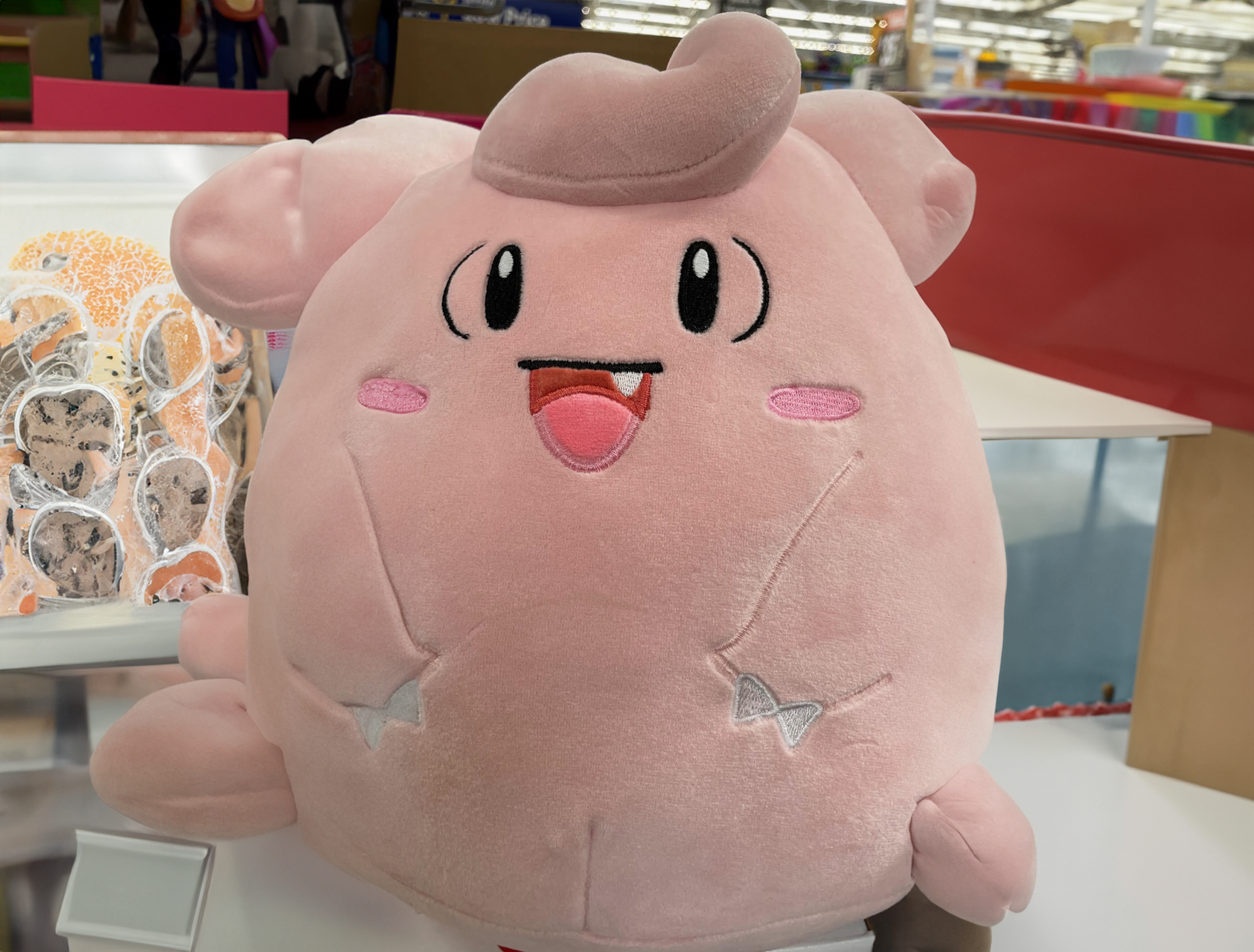 |
Squishmallows
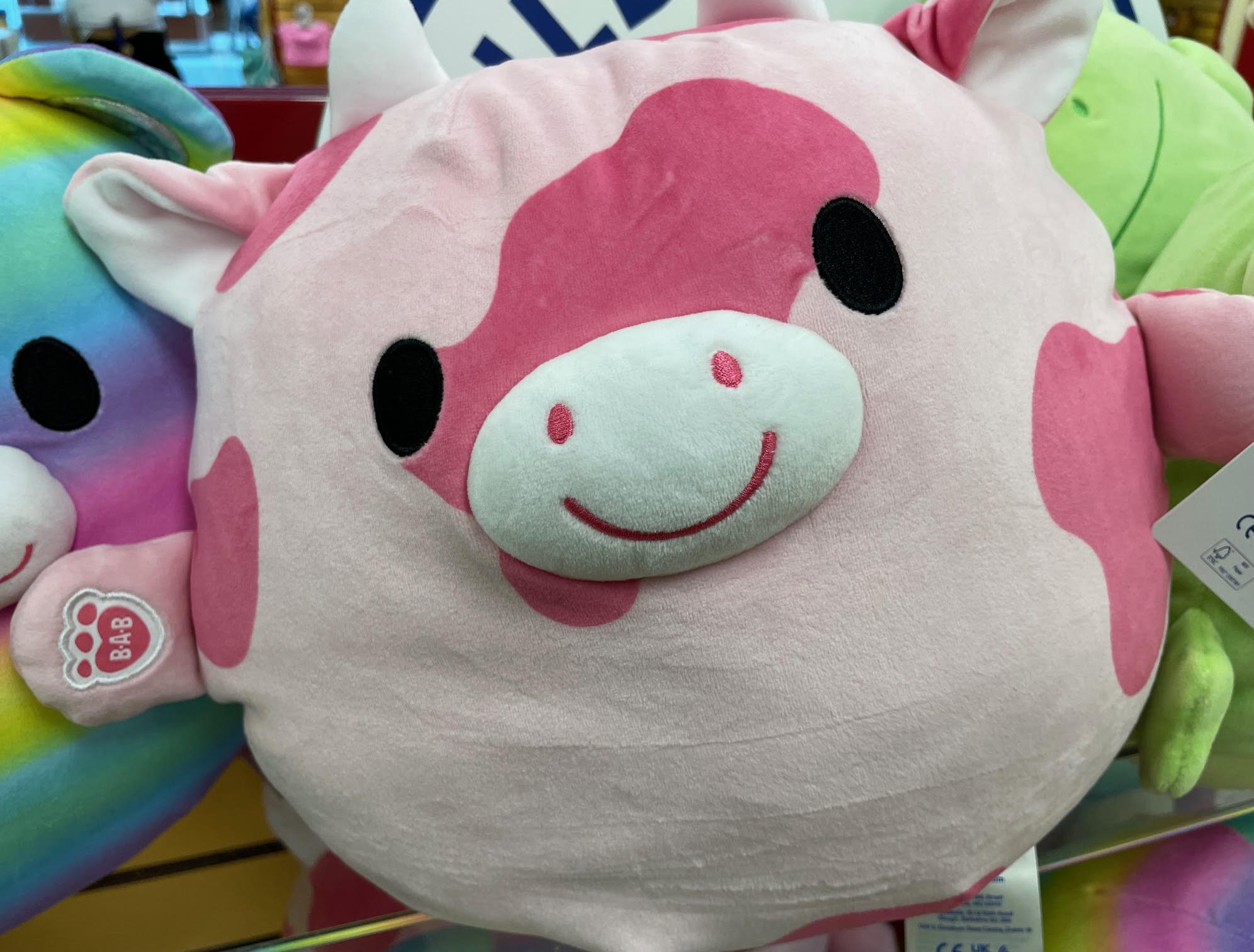 |
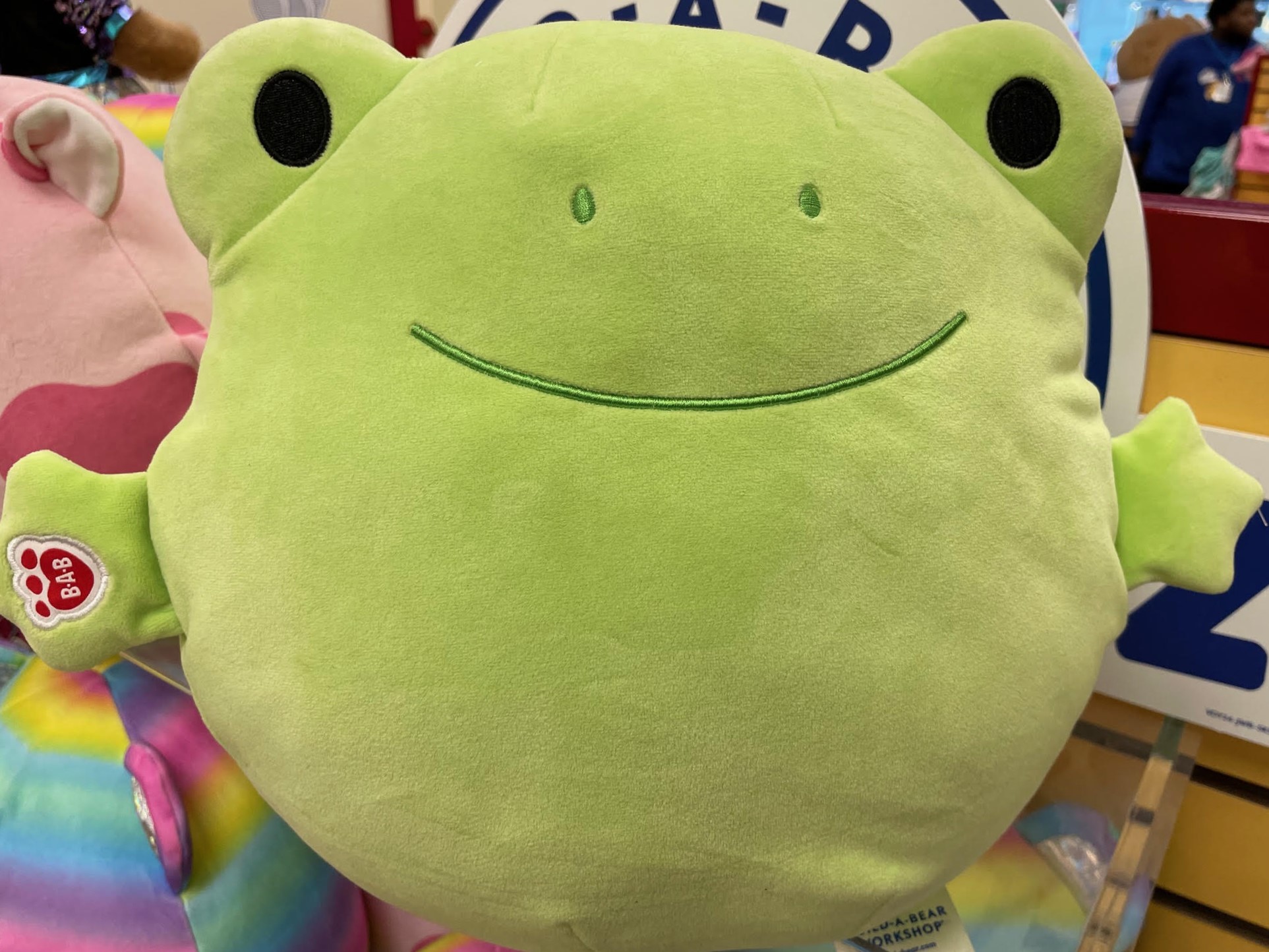 |
Skoosheri
I was not confused.
FJG/2024


